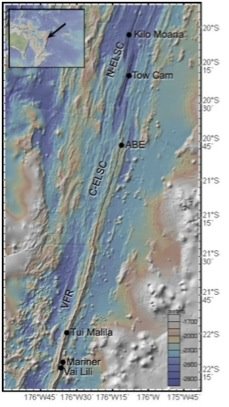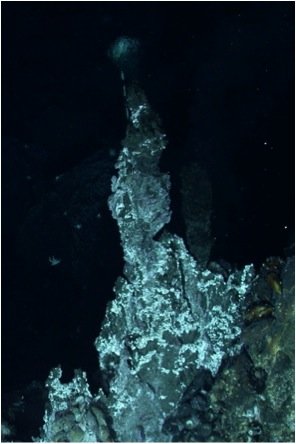The bottom of the ocean here at the ELSC is a feast for the eyes. The smokers look like beehives and wasps nests; there are low, wide flanges and tall spires that look like California redwoods. And then there are the animals: snails, mussels, crabs, shrimp, sponges and a myriad of other fascinating creatures. But it's the diversity of what we can't see that brings many of us out here - we're here to study the microorganisms that live in the vent system. The Eastern Lau Spreading Center provides an ideal opportunity for microbiologists to explore whether the observed geological and geochemical differences along the Center influence the distribution of microorganisms. One way we have been investigating the diversity of the microbes from this area is by trying to grow them in the lab. This is like trying to figure out if somebody you have never met before is allergic to peanuts. How would you know if they didn’t tell you?! So, when trying to grow novel microorganisms in the lab, one has to be rather clever in trying to figure just what conditions they would like to grow under in the environment and then mimic that somehow in the lab. Conditions in the natural microbial world are much more favorable that in your sterile lab and in the glass tubes and incubators!

The very basics for growth are an energy source and a carbon source. That’s how we start our detective work. Then we decide what physical conditions might be conducive to grow (like acidity and temperature). With a combination of conditions and many tubes of media (see photo above), we use the sulfide chimney samples as the inoculums. In the photo below, you can see a sulfide chimney (in two pieces) with a white crust material. This crust material is actually teeming with microorganisms! We then incubate, and wait…

Once we have a microbe in culture in the lab, we can test it for all sorts of things. For example, we can test the extremes of temperature and acidity that it can withstand. We can also figure out how diverse it's diet is, and how it might be contributing to chemistry of the vent environment. All of these things help us to understand why different microorganisms live in different places in vent environments. And just like the animals that live in vent environments, there are many different kinds of microorganisms. On this cruise we've got a large team of microbiologists, all looking for different kinds of organisms. We each are targeting different energy and carbon sources, and different geochemical conditions using various kinds of media. We’ll try to summarize our efforts…
Of course much of the vent fluid here is quite acidic, around pH 3.5-4, so many of the organisms people are looking for are acidophiles ("acid lovers"), but even these come in various shapes and sizes. The Reysenbach group is looking for two different kinds of organisms. One group is the Aquificales, organisms that actually gain energy by combining oxygen and hydrogen to make water! Another group they're looking for are the DHVE (see previous blog post). Karyn is looking for organisms that use organic sulfur compounds to gain energy. Not much is known about these compounds in vent systems yet, but recent geochemical modeling suggests that they should exist in vent systems and that they could be a potential energy source for organisms in these environments. Tatyana, Alex and Anna are targeting other interesting metabolisms, including methane oxidation, oxidation of simple organic compounds with sulfur and sulfate, and manganese and iron reduction. In addition, Lise is even working on the microorganisms that feed on the colder rocks away from the venting structures. We’ve had some positive and encouraging results, but growing microbes is a slow business, so hopefully we'll have an update for you later!
One of our most successful culturing efforts has used the same approach, but with slightly different motivations.... Jon and Chris (from the Girguis group) have been using the same strategy for making yoghurt! Their initial inoculum: some yoghurt bought by the ship for breakfasts; the energy and carbon sources: milk; the physical conditions: 37 C (~100F) and a few hours….

And we have “Boaghurt”!! Boat Yoghurt. It is quite yummy!


